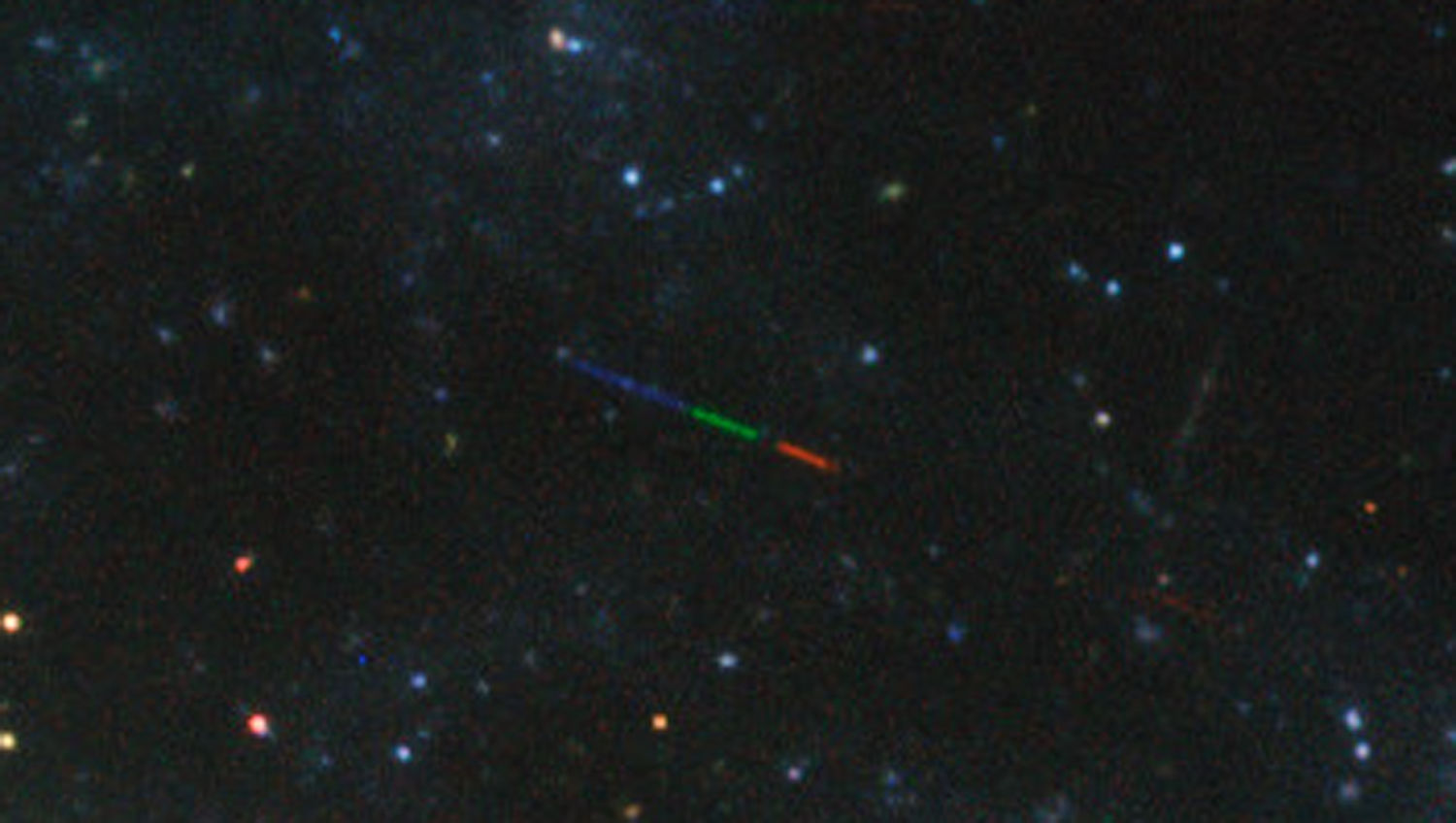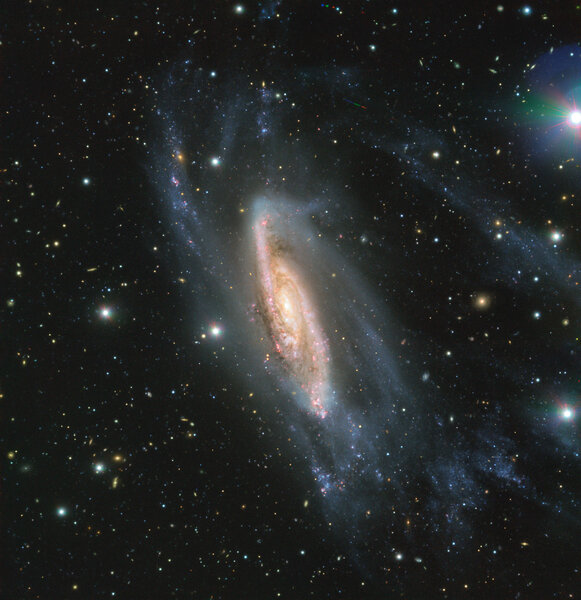Create a free profile to get unlimited access to exclusive videos, sweepstakes, and more!
A weirdly gorgeous galaxy and an interplanetary interloper

Hey! How about a gorgeous galaxy image for you today?
NGC 3981 is a lovely spiral at moderate inclination to us, giving us a spectacular view of its center and spiral arms. It’s roughly 80 million light years away (though I’ve seen some places saying it’s as close as 65 million; I base mine on its redshift which I plugged into Ned Wright’s Cosmology Calculator) and is part of a largish group of galaxies called the NGC 4038 Group, which includes the famous interacting Antennae Galaxies.
But that’s not really what I want to tell you about. Instead, take a look at the image: NGC 3981 is a little bit weird:
Don’t get me wrong. Holy wow, it’s beautiful! But it’s still weird. The spiral arms are all wonky. A lot of them are short and stubby, and, weirdly, straight. These short sections are called “rows”, and appear in many otherwise normal spiral galaxies. From a literature search, I don’t think it’s clear what causes them. Some authors have speculated that they are a large-scale phenomenon, working across thousands of light years in a galaxy, and may be due to shock waves created in gas clouds in the arms. But how this might create them isn’t known. That seems like a fruitful area of study for someone; interestingly I didn’t find any research papers focused on NGC 3981 at all; just its inclusion in some catalogs and such.
Overall, the structure of NGC 3981 is a bit messy, too, implying it may have suffered a collision with another galaxy sometime in the recent past. That makes sense if it’s part of a group of galaxies… but I didn’t find any galaxies very close to it in survey images. There’s a non-distinct elliptical not too far from it, but it looks too far and too small to have done the sort of damage seen in 3981. So I’m not sure what it’s doing.
But there’s another thing to see: Look to the upper right of the galaxy center, about 2/3rds of the way to the top of the image. See that little multi-colored streak, the one that’s blue, green, and red? That’s an asteroid! As we and the asteroid orbit the Sun it appears to move against the background stars, leaving a streak. The colors are because three different filters were used to make this color image, each one in turn.
I had to laugh when I zoomed in. From the streaks, I can deduce the blue exposure was the longest, and the green filter was swapped into place quickly. But then there was a gap of a few minutes to put the red one in place, and that exposure was shorter. As it happens most electronic detectors are more sensitive to red light than blue, so you need to expose blue longer to get the same depth as red. At least something in this image makes sense to me scientifically!
And note: If that’s a main belt asteroid, it’s about a trillion times closer to us than NGC 3981. That’s cool.
So while my scientific curiosity itch about this beast still remains unscratched, its beauty makes up for a lot. In fact that’s why this image was taken in the first place; using one of the Very Large Telescope 8.2-meter diameter Unit Telescopes, this fantastic shot was taken as part of the European Southern Observatory’s Cosmic Gems program, showcasing interesting objects. If sky conditions aren’t optimal for science (if say it’s a bit hazy or the air is unsteady) then these sorts of images are taken purely for public consumption.
I love this. Love love love. If these magnificent telescopes can’t do science, but the sky is clear enough for art, then why not?















